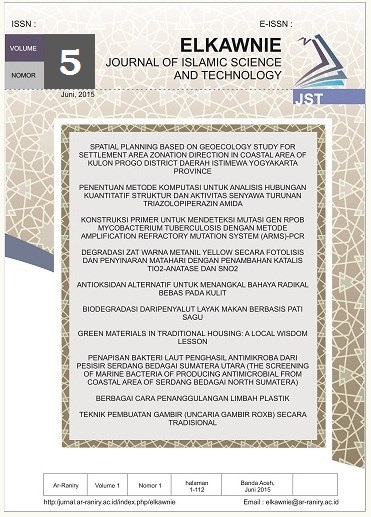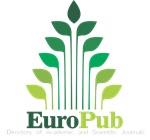Fermentasi Limbah Kulit Durian Menjadi Cuka Organik Dengan Menggunakan Acetobacter aceti
DOI:
https://doi.org/10.22373/ekw.v5i1.3902Keywords:
limbah, kulit durian, cuka organik, Acetobacter acetiAbstract
Cuka merupakan hasil olah makanan dari proses fermentasi glukosa dengan menggunakan Sacharomyces cervisiae menghasilkan etanol. Fermentasi etanol secara aerob dengan menggunakan bakteri Acetobacter aceti menghasilkan asam cuka. Metode yang digunakan dalam penelitian ini adalah fermentasi, kemurnian cuka dianalisis dengan menggunakan GC-MS. Hasil yang didapatkan pembentukan asam cuku terbaik terbentuk pada minggu ke-3 hingga ke-4 dengan pH 3,5, dengan puncak kromatogram pada waktu retensi 8,473. Penelitian ini diharapkan dapat dijadikan upaya pemberdayaan dalam meminalisir volume limbah dengan mengolah menjadi produk yang ekonomis
References
Arianna. R., Dante, M. F., Simone, G., Roberta, D., dan Milena, L, (2015). Effect of pre-treatments on the saccharification of pineaple waste as a potential source for vinegar production. Journal Elsevier journal of cleaner production 112.
Irhamni., Diana, Saudah, Mulyati. D, Viena. V, Suzanni, M. A, dan Ernilasari. 2017. Produksi Bioetanol dari Limbah Kulit Durian. Prosiding Semdi Unaya.Universitas Abulyatama.
Nurismanto, R., Mulyani. T dan Tias D.I.N. 2014. Pembuatan Asam Cuka Pisang Kepok (Musapardisiaca L.) Dengan Kajian Lama Fermentasi dan Konsentrasi Inokulum (Acetobacter aceti). J. Rekapangan. 8 (2): 149-155.
Raji, Y.O., Jibril, M., Misau, I.M., Danjuma, 2012. By-Production of Vinegar From Pineapple peel. Int. Adv. Sci. RES.Tech. 3 (2), 656-666.
Downloads
Additional Files
Published
Issue
Section
License
Proposed Policy for Journals That Offer Open Access Authors who publish with the Elkawnie journal agree to the following terms:
a. Authors retain copyright and grant the journal right of first publication with the work simultaneously licensed under a Creative Commons Attribution License that allows others to share the work with an acknowledgement of the work's authorship and initial publication in this journal.
b. Authors are able to enter into separate, additional contractual arrangements for the non-exclusive distribution of the journal's published version of the work (e.g., post it to an institutional repository or publish it in a book), with an acknowledgement of its initial publication in this journal.
c. Authors are permitted and encouraged to post their work online (e.g., in institutional repositories or on their website) prior to and during the submission process, as it can lead to productive exchanges, as well as earlier and greater citation of published work (see The Effect of Open Access).

























